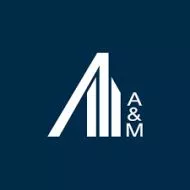- within Insolvency/Bankruptcy/Re-Structuring, Criminal Law, Litigation and Mediation & Arbitration topic(s)
To improve the visibility of lease assets and liabilities, the Financial Accounting Standards Board (FASB) issued ASC 8421, an accounting standard to govern the treatment of leases, in recent years.
Beginning January 1, 2022, private companies have been required to reflect lease assets, as so-called "Right of Use" assets, and liabilities on leases longer than 12 months on their balance sheets. This includes operating leases, which allow an entity use of an asset without taking on the cost and right of ownership. Under the previous accounting rules, operating leases were merely disclosed in financial statement footnotes and were not reflected on the balance sheet, allowing companies to keep millions of dollars of assets and liabilities off the balance sheet.
This topic is now increasingly relevant for the restaurant industry. After the sector managed its way through pandemic stoppages and other hurdles, the industry is starting to turn toward deal-making again, with mergers and acquisitions expected to rise. That makes understanding new accounting rules around leases, particularly as they relate to acquisitions, a very timely and valuable pursuit.
The bottom line: As investors begin to acquire or divest companies, new rules have made it more difficult to find deferred rent, an important lease liability that negotiators have relied on to calculate acquisition valuations.
Deferred rent is a liability resulting from the difference between actual cash paid and the straight-line expense recorded on a lessee's financial statements for an operating lease. This often occurs when there are escalating rent payments or free rent periods as the deferred rent liability reflects the imbalance between cash and straight-line expense. Under previous accounting rules (ASC 840)2, deferred rent was an account specifically used in the financial statements. Under new accounting rules (ASC 842), this amount is no longer separately identified.
How the ASC 842 Rule Works
Under the previous lease accounting rules, companies only recorded capital leases on the balance sheet. While they are recorded in the same way under the new rules, they are now termed 'finance leases.' Operating leases that were previously off-balance sheet are now also reflected on the balance sheet.
With the change to the treatment of operating leases, a liability previously known as deferred rent is no longer obvious on the balance sheet, making it more difficult for investors to calculate the value of the company during deal negotiations.3 As cash-basis and GAAP-basis rent diverged in the early stages of a lease, such as in the case when a lessee would receive free months of rent, the deferred rent liability would increase.
Sellers of restaurant companies would often ask bidders to value the business using the lower of the two conventions — GAAP-basis or cash-basis rent — which resulted in higher adjusted EBITDA, and therefore, a higher enterprise value. Depending on which basis they ultimately bid on, astute buyers would sometimes include the remaining amount of deferred rent within the definition of indebtedness. For example, if cash basis rent resulted in higher EBITDA and therefore a higher enterprise value, including deferred rent in the definition of indebtedness would at least make the buyer whole for some of the excess future cash outflows in the later years of the lease.
Instead of showing up as a separate amount on the balance sheet, deferred rent is now recorded as a reduction in right-of-use assets, making it more difficult to identify. In other words, the right-of-use asset recognized on the balance sheet already reflects the straight-line rent expense. The difference between the right-of-use asset and lease liability represents the deferred rent or prepaid rent. As such, both buyers and sellers will need to pay additional attention to balance sheets when preparing for and negotiating deals.
Conclusion
Buyers of restaurants with operating leases should understand the differences between cash-basis rent and GAAP-basis rent, including how that impacts their calculations of enterprise value. Depending on what rent convention is used, buyers and their advisors may need to do additional work to identify and quantify the remaining amount of liability that was previously referred to as deferred rent.
Footnotes
1 Leases (Topic 842)—Lessors—Leases with Variable Lease Payments (fasb.org)
2 Topic 842 and Topic 840 (fasb.org)
Originally published 10 October 2024
The content of this article is intended to provide a general guide to the subject matter. Specialist advice should be sought about your specific circumstances.



